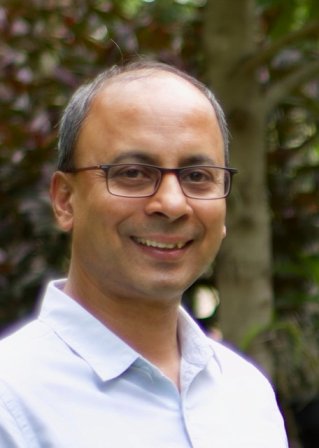On June 16, 2021, we woke up to a host of congratulatory messages. Our organisation, Society for Nutrition, Education & Health Action (SNEHA), was one of the 286 nonprofits to have been selected globally for an unrestricted grant by MacKenzie Scott.
Since SNEHA’s inception in 1999, we’ve very rarely encountered unrestricted grants for nonprofits. And when we have come across them, we’ve found the size of these grants to be a fraction of what for-profit enterprises routinely receive. The scale and complexity of many social problems are at such an order of magnitude that nonprofits need innovative and game-changing approaches to attract the best talent. They also need sufficient risk capital to rapidly develop and execute working solutions at scale, as much as celebrated commercial start-ups do.
COVID-19 has highlighted the role of nonprofits in providing many critical services to the most vulnerable and marginalised communities around the world. Nonprofits have had to face unprecedented challenges in doing so, while also having to shoulder the added burden of operating with restricted grants and compliance conditions. In contrast, despite the pandemic disruptions in 2020, venture capitalists have invested extensively in start-ups all around the world, including India. So why is sizeable risk capital so hard to come by for nonprofits?
The belief that value creation is hard to measure
When it comes to for-profit enterprises, progress can be easily measured in terms of revenue, market share, enterprise value, and more. However, for nonprofits, even though one can measure outputs, outcomes, and impact, there is no clear baseline data or starting point, which makes it difficult to quantify progress.
For example, in the context of addressing prevention and treatment of malnutrition in children at SNEHA, we measure output as the number of children covered for anthropometry; outcome as how many children have moved from severe to normal level of malnutrition; and impact as a decrease in the prevalence of malnutrition in an area. But how does one place an easily understandable, quantifiable value to this change? In the case of addressing malnutrition, we could calculate Disability Adjusted Life Years (DALY). However, these are complex calculations done by bio-statisticians and may be difficult for potential donors to understand.
Unrestricted funds enable nonprofits to model and test multiple approaches, and innovate and pivot as needed.
The absence of models that can evaluate and compare the value of change created by a nonprofit programme poses a serious barrier for anyone who wants to assess, compare, and invest significant capital in nonprofits. Therefore, the perception of risk may seem higher for nonprofits than for commercial enterprises.
This is precisely why funders need to adopt a trust-based approach to fund critical programmes that may be complex and long-running, but which can have a transformational impact when they succeed. Unrestricted funds enable nonprofits to model and test multiple approaches, and innovate and pivot as needed. This further empowers them to develop solutions that are based on a deep understanding of the problems, context, and evolving needs of the communities they work with.
So, how can philanthropists make this ‘leap of faith’ to unrestricted grants? Just as venture capitalists look for a comprehensive pitch in the for-profit sector, philanthropists can extend their parameters of evaluation to the nonprofit sector as well. For example, they can evaluate the soundness of the team and the clarity of their vision based on the solutions they propose. A mission-driven, capable team—a team that can experiment, fail fast, learn fast, and fix fast—is key to developing high-impact models and delivering relevant impact.
The possibility of failure
Venture capitalists invest in start-ups with the knowledge that only a fraction of their investments may yield returns. However, when funders approach nonprofits, their expectations that the operating models and programmes will create impact is a given.
Discussions tend to lean towards efficiency rather than efficacy. Funders also typically place a disproportionate emphasis on tracking overheads, operating expenses, and the resulting ‘cost per person served’ (calculated by dividing the total budget of the programme by the total number of people served).
Additionally, arbitrary norms are set for core costs such as leadership, finance, communications, governance, and so on, without which no programme can be developed or delivered. Meanwhile, discussions on the quality of the intervention, the resulting impact and empowerment achieved, and the sustainability of the outcome are lacking.

Nonprofits deal with protracted social issues, most of which are highly interconnected. Therefore, if one wants a breakthrough solution, it would mean trying many different things, some of which may fail. Experimentation and innovation are key to addressing such protracted problems, for which nonprofits need the flexibility that unrestricted grants afford them.
For instance, take this example of an IT company that was advising us at SNEHA on the use of technology a few years ago, soon after we had introduced electronic data collection. They observed that during a home visit to a pregnant woman, our frontline workers were entirely intent on capturing data accurately on their mobile phones. As a result, they weren’t paying attention to addressing the critical aspects of behaviour change needed to encourage uptake of antenatal care, support for institutional delivery, and so on.
At that time, however, we were fortunate to have flexible funding to pilot a new technology that allowed us to record discussions between our frontline workers and the pregnant women and transcribe those audio recordings. This allowed our team to focus all their attention on the women and the desired behaviour change.
The experiment did not pan out as expected—with high error rates in transcription due to varied language and accents—and had to be shelved. On learning this, however, we changed track. We invested in building the capacity of our frontline workers so that data entry could be further streamlined and they could focus all their attention on the pregnant women. This was only possible because the funding was flexible and unrestricted.
The problem of talent
When donors think of nonprofits, they think of programmes, interventions, outcomes, and maybe even movement building. But they rarely think about investing in the people who develop and deliver all of this.
Hiring and retaining talent has always been a challenge in the social sector due to the challenging nature of work and poorer pay scales.
While many restricted grants have expense lines for capacity building, it usually relates to the technical skills required for that particular project. Moreover, since programme specific-funding is common in the social sector, funders tend to club all other costs—including the investment in senior talent—as overhead or administrative costs, on which they place limits. This further restricts nonprofits from scaling the programme, hiring talent, or even building capacity in-house.
Hiring and retaining talent has always been a challenge in the social sector due to the challenging nature of work and poorer pay scales. The absence of institutional funding has ensured that the sector is mostly unable to compensate people adequately and sustainably. Despite this, nonprofits have been founded by people with incredible purpose, energy, and commitment who persevere despite the tremendous headwinds they are up against. There are outstanding people at all levels who help address wicked problems, develop and deliver solutions for these, and build enterprises at scale.
We need funders who believe that nonprofits may be best placed to decide how to use the funds they receive and trust that they will.
Investing in talent, especially leadership development at multiple levels, is essential for nonprofits to progress on their missions and combat complex societal problems. Unrestricted grants allow nonprofits to hire not only those who are mission-driven, but also those with deep expertise to build human capital across all relevant areas—strategy, qualitative and quantitative research, capital raising, and technology.
The nonprofit sector needs more Mackenzie Scotts—funders who will take big bets on good organisations that address intractable problems, with a risk tolerance that allows for experimentation to effectively address systemic change. We need funders who believe that nonprofits may be best placed to decide how to use the funds they receive and trust that they will.
This mindset to support bold, innovative, and game-changing initiatives with risk and growth capital will make a world of difference to humanity at large and for generations to come.
—
Know more
- Read this report to understand why nonprofits in India are insufficiently funded.
- Learn more about the nonprofit ‘starvation cycle’ that prevents organisations from maximising their impact.
- Read this article and watch this video to learn more about the need to reimagine funding for nonprofits.






